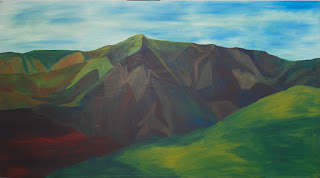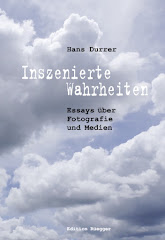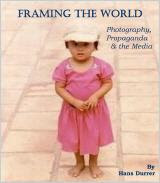George Rodger (1908-1995), born in Hale. Cheshire, was one of the co-founders of Magnum Photos Inc., "a cooperative photographic agency intent on collectively supporting its members and protecting their copyrights as well as efficiently distributing and selling their work internationally", as Aaron Schuman of SeeSaw Magazine writes. The other founders I had so far thought to be Robert Capa, Henri Cartier-Bresson, and David 'Chim' Seymour yet, as Aaron Schuman informs me, Bill Vandivert and others also belonged to the founders.
The photographers he admired, writes Chris Steele-Perkins in The Sudan in Colour, all worked in black and white and Rodger's most famous shot from his time in the Sudan is a black and white picture that depicts a victorious Korongo Nuba wrestler being carried through a crowd on the shoulders of his defeated opponent.
The
champion of a Korongo Nuba wrestling match,
Kordofan, Southern Sudan
1949
@ George Rodger / Magnum Photos
Aaron Schuman's description of this photograph helps me see aspects that might have escaped me. "The subject's posture is impressively dominant and proud. Furthermore, rendered in black and white, his body – dusted with white wood ash and naked apart from two small nose rings, a thin bracelet on his right wrist and a hoop earring in his left ear – appears solid and heavy, the varying grey tones of each muscle and vein mimicking the smooth monochromatic contours of expertly chiselled marble. His expression is more ambiguous though, both profoundly authoritative and intensely curious, and because of deep shadows that fall across his eyes in many reproductions of the image, it often appears as if he is staring directly down Rodger's lens (when in fact, on closer inspection of finer prints, it becomes clear that he is gazing intently over the head of the photographer."
Bracelet fighters of the Kao-Nyaro. 1949
@ George Rodger / Magnum Photos
In the late 1940s, colour technology, while present in print media and especially in fashion and advertising, was not dominant in documentary and reportage photography. The colour images in this tome, that Rodgers had made alongside his black-and-white work, had until now been unknown and unpublished.
"It seems appropriate", writes Chris Steele-Perkins, "that in Magnum Photos' seventieth year, after seventy years of turmoil and fellowship, the 'lost' colour photographs of George should be published, to celebrate this seminal work on the Nuba, Latuka and other Sudanese peoples and also remind us that this is the Magnum that George had co-founded seven decades ago, a Magnum that is still very much alive and can surprise with these archive treasures misplaced by history."
"What these images reveal, apart from an added visual vibrancy", argues Aaron Schuman, "are fascinating clues into the working practices of a professional photographer at the top of his game in the mid-twentieth century."
Dinka and Nuer girls dressed for a ceremonial dance. 1949
@ George Rodger / Magnum Photos
I'm not into ceremonial dances or into ritual fights, neither at home nor abroad, yet I thought the photographs in this tome strikingly fascinating. I would have very much liked to know what was going on in the heads of these boys and girls, women and men. Wouldn't they have it thought strange that a white Englishman in his early forties was taking pictures of them?
As ever so often when looking at photographs of attractive men and women I'm not too sure whether it is the photographs that I'm fond of or the ones depicted. I guess it's the fit bodies and the confident manner that these Southern Sudanese display that I'm mainly impressed by.
To me, these photographs radiate dignity and pride.
George Rodger
NUBA & LATUKA
The Colour Photographs
Essays by Aaron Schuman
and Chris Steele-Perkins
Prestel; Munich-London-New York 2017





































